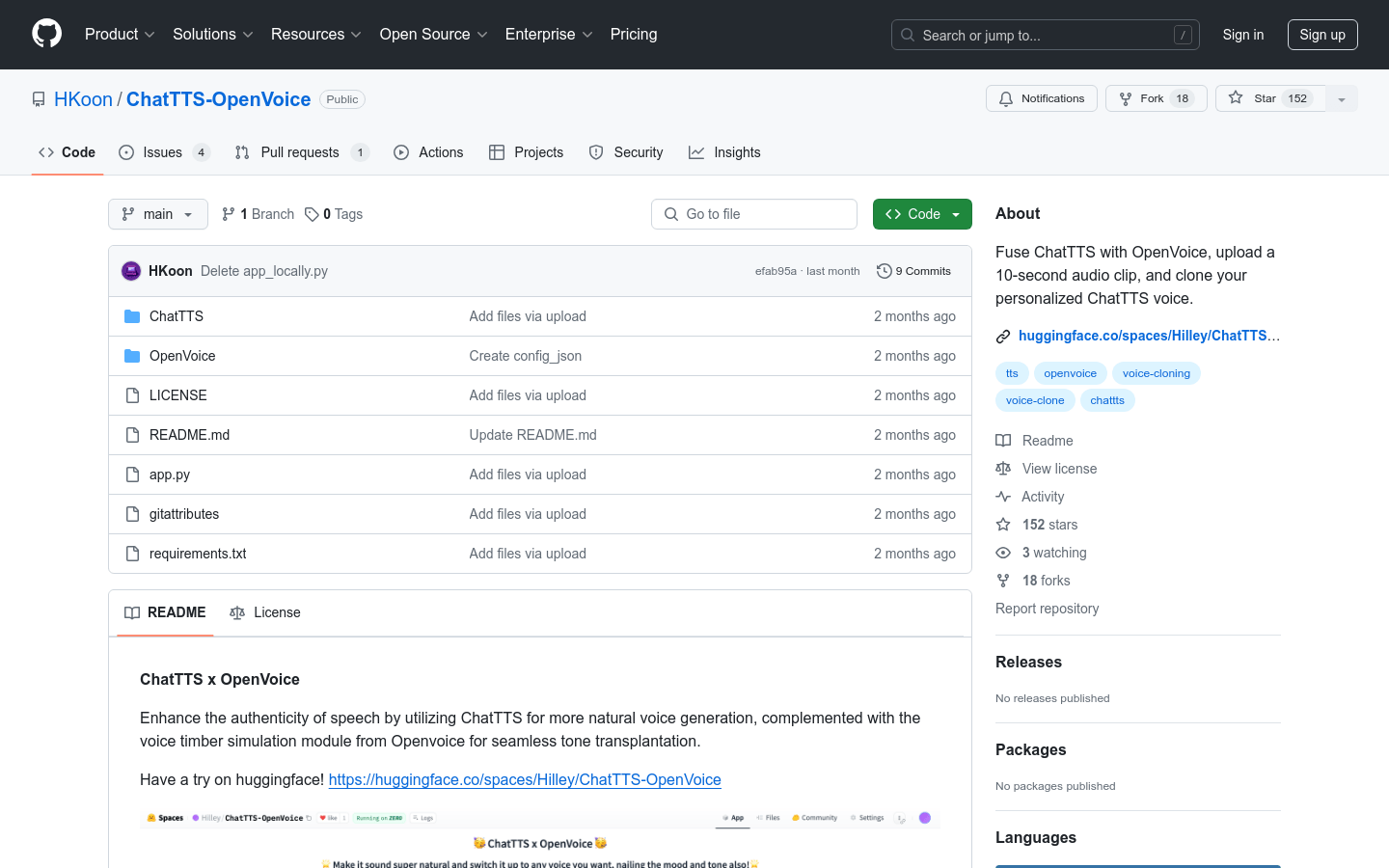

Chattts OpenVoice
Overview :
ChatTTS-OpenVoice is a voice cloning model that combines ChatTTS and OpenVoice technologies. By uploading a 10-second audio clip, it can clone personalized voices and produce more natural-sounding speech. This technology is significant in the field of voice synthesis as it provides a new way to generate realistic voices suitable for various applications, including virtual assistants and audiobooks.
Target Users :
The target audience includes developers, voice technology enthusiasts, and content creators. Developers can leverage this technology to create applications with personalized voices, voice technology enthusiasts can explore and experiment with the possibilities of voice cloning, and content creators can use it to generate audio content that enhances the appeal of their work.
Use Cases
Developers use ChatTTS-OpenVoice to generate personalized voices for virtual assistants.
Educational institutions utilize this technology to create realistic narration voices for audiobooks.
Content creators apply this model to produce unique voiceovers for videos or podcasts.
Features
Upload a 10-second audio clip for voice cloning.
Generate more natural-sounding speech to enhance the realism of voice synthesis.
Support seamless tone transplantation to enrich the personality of the voice.
Applicable to various scenarios, such as virtual assistants and audiobooks.
Provide an online platform for users to test and experience the tool.
Written in Python, making it easy to integrate and extend.
How to Use
Visit the ChatTTS-OpenVoice space on the Hugging Face platform.
Upload a 10-second personal audio sample.
Wait for the system to process and generate the cloned voice.
Adjust the tone and pitch of the generated voice as needed.
Apply the generated voice to desired scenarios, such as virtual assistants or audiobooks.
Further optimize and adjust the voice synthesis parameters as necessary.
Featured AI Tools

GPT SoVITS
GPT-SoVITS-WebUI is a powerful zero-shot voice conversion and text-to-speech WebUI. It features zero-shot TTS, few-shot TTS, cross-language support, and a WebUI toolkit. The product supports English, Japanese, and Chinese, providing integrated tools such as voice accompaniment separation, automatic training set splitting, Chinese ASR, and text annotation to help beginners create training datasets and GPT/SoVITS models. Users can experience real-time text-to-speech conversion by inputting a 5-second voice sample, and they can fine-tune the model using only 1 minute of training data to improve voice similarity and naturalness. The product supports environment setup, Python and PyTorch versions, quick installation, manual installation, pre-trained models, dataset formats, pending tasks, and acknowledgments.
AI Speech Synthesis
5.8M

Clone Voice
Clone-Voice is a web-based voice cloning tool that can use any human voice to synthesize speech from text using that voice, or convert one voice to another using that voice. It supports 16 languages including Chinese, English, Japanese, Korean, French, German, and Italian. You can record voice online directly from your microphone. Functions include text-to-speech and voice-to-voice conversion. Its advantages lie in its simplicity, ease of use, no need for N card GPUs, support for multiple languages, and flexible voice recording. The product is currently free to use.
AI Speech Synthesis
3.6M









